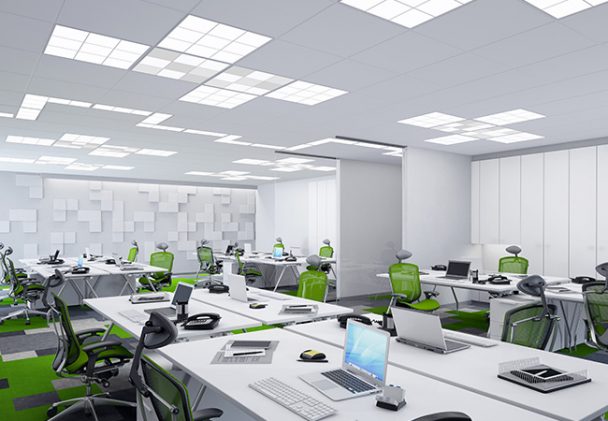The level and hue of lighting can influence your mood and work performance. This is not really surprising as it has already been proven that more light equates to better mood and a variety of colors, once they are predominant, can stimulate your brain in different ways. Therefore, if you want to take a step towards creating a healthy and productive work environment, here are some tips for practical and beneficial office lighting.
Go a step further
Co-working spaces and custom offices are springing up all over Sydney, and Harbour City is known for its impressive kaleidoscope of lights all over town. Treating the offices with best possible lighting that benefits the workers is no exception. The key thing when you start planning the office lighting is not to rely on the ubiquitous choices but consider the specific square footage of the office as well as the type of interior you are trying to accommodate.
The goal is to at least keep it just as bright once the sun sets as it is bright outside during the peak of the day. This almost guarantees you’ll have to double down when it comes to the number of light bulb sockets in a particular office space. Science has already proven that good lighting encourages the production of happiness hormones, so it is really important to have the necessary coverage.

Don’t be afraid to modulate
Nearly every entrepreneur or investor from Sydney will give you the same advice – don’t be afraid to modulate. If something doesn’t work or a particular aspect cannot mesh well with the rest of the office, don’t be afraid to strip it down and find a better solution. It is true this will take both time and finances, but it is better to have a perfectly balanced office on your hands than a tasteless mess and an eyesore.
Thankfully, this Sydney-based commercial electrician can perform the necessary light upgrades as quickly and efficiently as possible without sacrificing quality. If you can, try to do this while the office is still in the “construction” phase. This especially goes for the light grid. It is much more manageable to, for example, repaint the walls after the office is put in use than to renovate the light grid.

LEDs are a lifesaver
Incandescent light bulbs are the thing of the past and CFLs (compact fluorescent lamps) are being pushed aside due to their health-hazard aspect as the LED lights take the spotlight. If you are equipping your office space with a lot of light sources, LED lights are the way to go. They are slowly winning over the energy-saving market and most green-thinking entrepreneurs decide to replace the old grid with the LED lights, if they already haven’t. The upsides are simply hard to ignore.
LEDs spend at least 90% less electricity of the incandescent light bulbs and they convert more than 90% of electricity spent into light. This means that the heat-up margin is so small it is virtually insignificant, which is a major improvement over the classical incandescent bulb that can easily turn every chamber into a furnace, no matter how big it is. This, in turn, compels office spaces to overwork the AC system – which finally leads to nightmarishly high utility bills and a very strong, noticeable footprint on the environment. With LED lights, most of such problems are practically whisked away. They benefit both the ecology and business.

Utilise natural light as much as you can
Still, if your budget and the building allow it, utilize all the natural light you possibly can. It is not only one of the best and most flattering assets of interior design, it also circumvents the placebo effect of artificial lighting and truly compels the brains of workers to increase their work performance and produce more happiness hormones. Abundance of natural light in offices also creates a rather peculiar but welcoming psychological effect – it makes the workers more connected to the outside world. The nuance this feeling creates can truly have a positive impact on the morale of workers, especially if the job exposes them to a lot of stress and overwhelms them with tasks.
Office design has turned into a crucial sub-section of architecture and interior design as a whole, and choosing the right sort of lighting for the working space is just as integral part of it as other elements. The extent and type of lighting is not only a matter of size and layout of the office space, it is also a matter of effect it has on productivity. At the end of the day, every aspect of the office has to accommodate the workers’ ability to do the job and to reflect the mission, vision and goals of the company.






